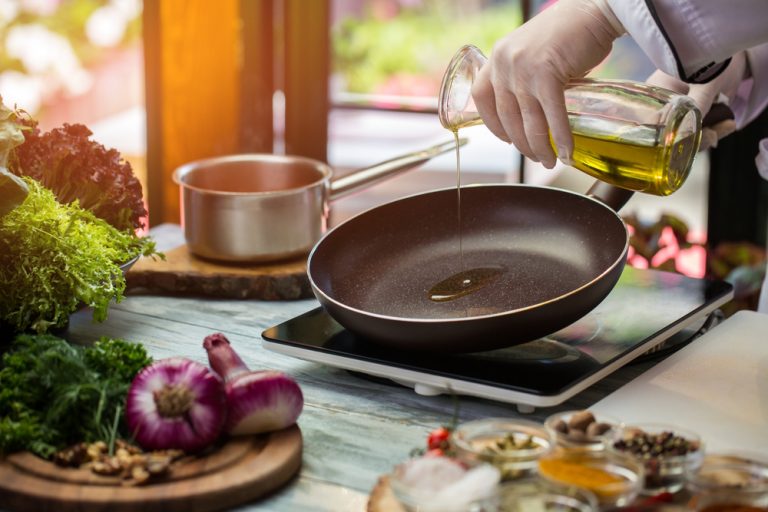The presence of adequate amounts of fat in the daily diet is extremely important for the proper functioning of the body. Fats are a concentrated source of energy. Some vitamins are also soluble in them. Some essential fatty acids are also needed for optimal organism health.
Fats in the kitchen.
The frying process itself can take place without adding fat - special Teflon pans are used for this purpose. However, most often we add oil or olive oil to the dishes prepared in this way.
Fried dishes are commonly considered to be difficult to digest. Frequent consumption causes discomfort described as a feeling of heaviness on the stomach, accompanied by a strong bounce.
Symptoms of indigestion are also typical, such as abdominal pain and painful bowel spasms, as well as gastric ailments. Eating fried foods can cause heartburn and hyperacidity. The meals prepared in this way also exacerbate the course of peptic ulcer disease and oesophagal reflux disease.
Why is frying harmful to health?
Frying significantly improves the taste of food, it also positively influences its appearance and aroma, therefore, despite the reservations of specialists in healthy nutrition, it remains a commonly used culinary procedure.
One of the main disadvantages of using such a cooking technique is the absorption of significant amounts of fat by fried products. Objections among nutritionists also cause adverse changes in fats during their heating. Frying and baking lead to dangerous changes in these compounds - oxidation, polymerization, hydrolysis, cyclization. These processes significantly reduce the nutritional value of products.
The resulting peroxides have free radical properties - they can damage cells, enzymes and contribute to the development of atherosclerosis.
Frying provides a lot of calories and makes it much more difficult to lose weight.
Frying causes the prepared products to lose valuable fat-soluble vitamins (vitamins A, D, E, K), as these are sensitive to high temperatures.
During frying, especially using lard, the calorific value of the prepared food increases. Therefore, from a low-calorie product, we can get a high-energy meal. Its calorific value can be doubled or even tripled!
Lack of awareness of the calorific value of the ingredients used causes that our daily diet often abounds in products with high-fat content. Fried meat, mayonnaise, sauces, fries - all fatty foods are high in calories.
Their excessive consumption leads to an increase in body weight and contributes to an unfavourable lipid profile (triglycerides and so-called bad cholesterol levels increase).
These foods have nothing to do with healthy eating. When eaten from time to time, they should not be harmful, but if eaten regularly, they will lead to
- overweight
- steatosis
- hypercholesterolemia
How to fry?
The best solution would be to eliminate or reduce frying. It is recommended to give it up especially to people suffering from digestive diseases. However, if it is not possible to completely exclude frying, it is worth trying to make this process as healthy as possible.
In order to increase the nutritional value of the food, it is necessary to choose appropriate types of fat of a certain quality for frying. Vegetable oils should be the best choice. The frying should be as short as possible and our oil should never reach its smoke point during the treatment. This is the only way to provide the body with essential fatty acids (EFA) and vitamins.
It is worth remembering that reaching for good quality vegetable fat, we can not only increase the nutritional value of the fried product but also reduce the potential issues of the frying process. However, it is important to use only fresh fat, and after preparation, drain the dish on a napkin or paper towel.
An alternative to frying is stewing or steaming. Grilling is a good solution, especially when we use fish or vegetables instead of traditional, fattening meats.






